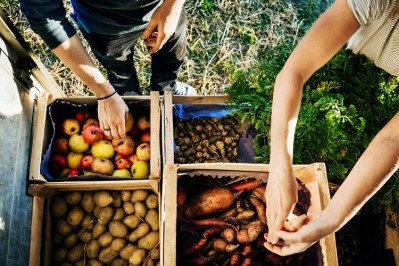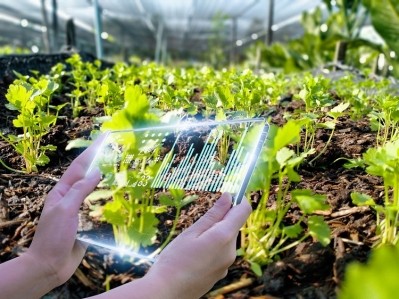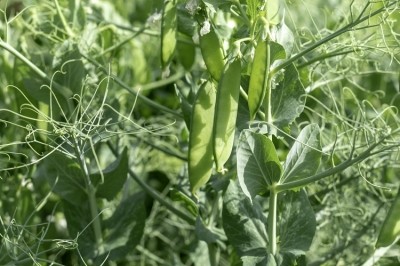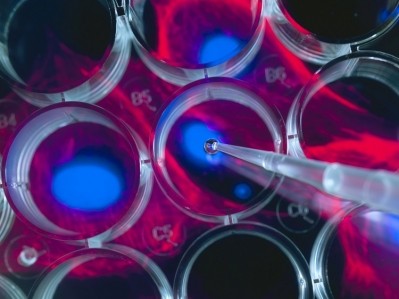CRISPR launch aims to future-proof agrifood production

CRISPR technology seeks to enable precise and targeted genetic modifications in crops. The gene editing technique offers a solution to shape how the food and agricultural sector produces agrifood, as the principles behind CRISPR can offer a way to ensure food security and sustainability, food and beverage consultancy Forward Fooding relayed.
Unlike traditional breeding methods, which can take years to produce desired traits, CRISPR can produce crops with specific characteristics in months. “It can also be used to create crops that are more sustainable, nutritious, and resilient to environmental stress,” Max Leveau, Co-founder and Chief Operating Officer (COO) of Forward Fooding, told FoodNavigator.
Making food systems more resilient
At the centre of using the CRISPR technique is the pursuit to help make our global food systems more resilient. Climate change, global population and ongoing calls for novel new product development (NPD) are leading concerns and efforts driving its use.
Utilising CRISPR gene editing provides the potential to fortify crops against harsh conditions, enhance crop quality, and optimise yields. “With this technology, researchers have developed crops with improved tolerance to pathogen infection, improved plant growth, crop yield and crop quality,” Leveau added.
Using CRISPR, global agrifood systems can improve crops’ resistance to persistent harsh weather so we can ensure crop yield despite the climate crisis. “The continued warming of the planet is causing abiotic stresses on crops, thereby affecting production,” Leveau said. “This poses a serious threat to an already volatile supply chain and further worsens food insecurity,” continued Leveau.
Meanwhile, projections suggest the global population is set to reach 8.5 billion by 2030. “With it comes an increased demand for food nutrition, not to mention the millions of people currently suffering from malnutrition,” added Leveau.
CRISPR is tipped to help the globe secure the future of food accessibility and overcome malnutrition, as the technology can fortify the nutrient profile of plants. Such fortification enables these plants to increase the production of certain vitamins, zinc, iron, and other essential nutrients.
“The call to make our agrifood systems more efficient, sustainable and resilient will not be possible without the use of science and innovation,” said Leveau. “Innovative techniques such as CRISPR technology are key to ensuring food security while protecting the environment and reaching climate targets at the same time,” Leveau added.
Maximising taste and produce shelf-life
Answering specific consumer demands is a leading requirement of CRISPR technology. For example, some varieties of tomatoes have been bred to look physically appealing to buyers and withstand long transport but lose most of their taste in transit. On the other hand, there are heirloom tomato varieties that don’t look as good but make up for their sweet taste. CRISPR has the potential to modify these products’ negative characteristics to make both varieties appetising to consumers.
Technology can also help increase product shelf-life, appealing to most consumers. Some produce, like strawberries, are naturally delicate, so extra care is needed as they tend to rot easily.
CRISPR’s applications also “highlight how the technology can help fight food loss and waste”, said Leveau, detailing how 10 million pounds of “ugly” produce end up in landfills.
Potential in agrifood in 2024
Legislative changes support the advancement of new genomic techniques and offer agrifood producers more opportunities to develop items using technologies such as CRISPR. “Recently, the EU has amended its directive on gene-edited products, proposing more relaxed laws for genetically edited plants developed using new genomic techniques but keeping in place stringent rules for genetically modified organisms (GMO),” added Leveau.
Norway, which is not part of the European Union (EU) but is a member of the European Economic Area, proposed a risk assessment of gene-edited products. The move signals a departure from the process-based assessment standard currently in effect.
Switzerland, neither a member of the EU nor the European Economic Area, has eased restrictions on gene-edited crops. “However, restrictions remain in place for GMOs until 2025 unless they provide clear benefits for farmers, consumers, and the environment over conventional breeding,” said Leveau.
The technique can modify plants to help address food insecurity brought on by climate change and the growing human population, the growing demand for more nutritious food, and enhancing the sensory qualities to make it more appealing to consumers. “CRISPR genome editing is an invaluable technique,” Leveau continued.
CRISPR can also lower physical damage, such as bruising at different stages of postharvest handling. Managing damage is particularly important, especially during packhouse operations, transport and storage, which can decrease food loss and waste.
“However, such innovation can only help us build a more resilient food system if permitted by policies in place,” added Leveau.

















